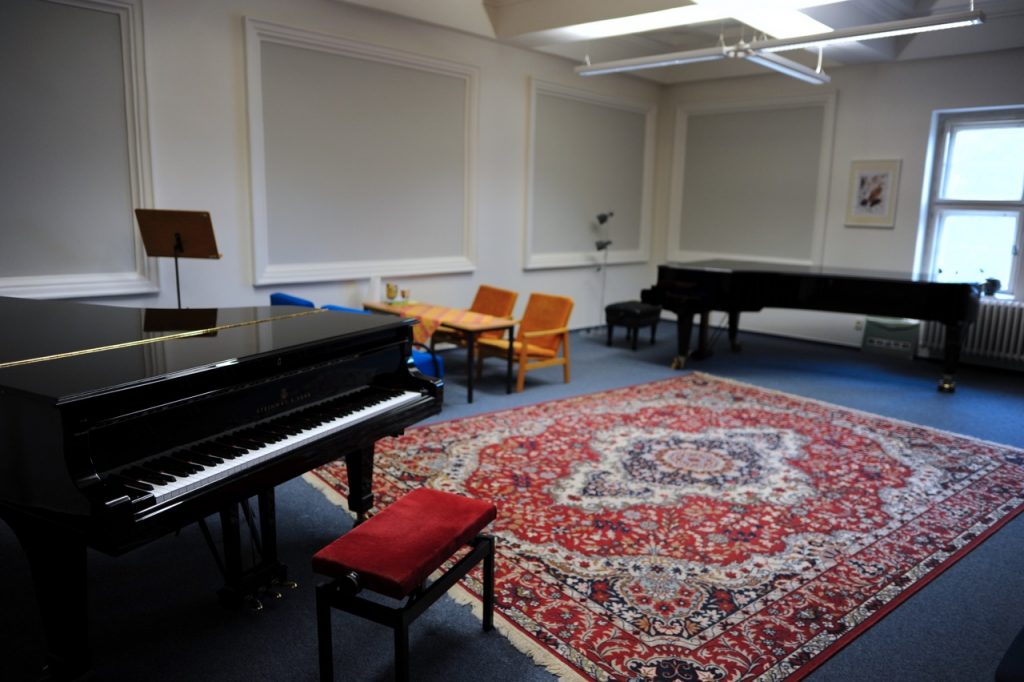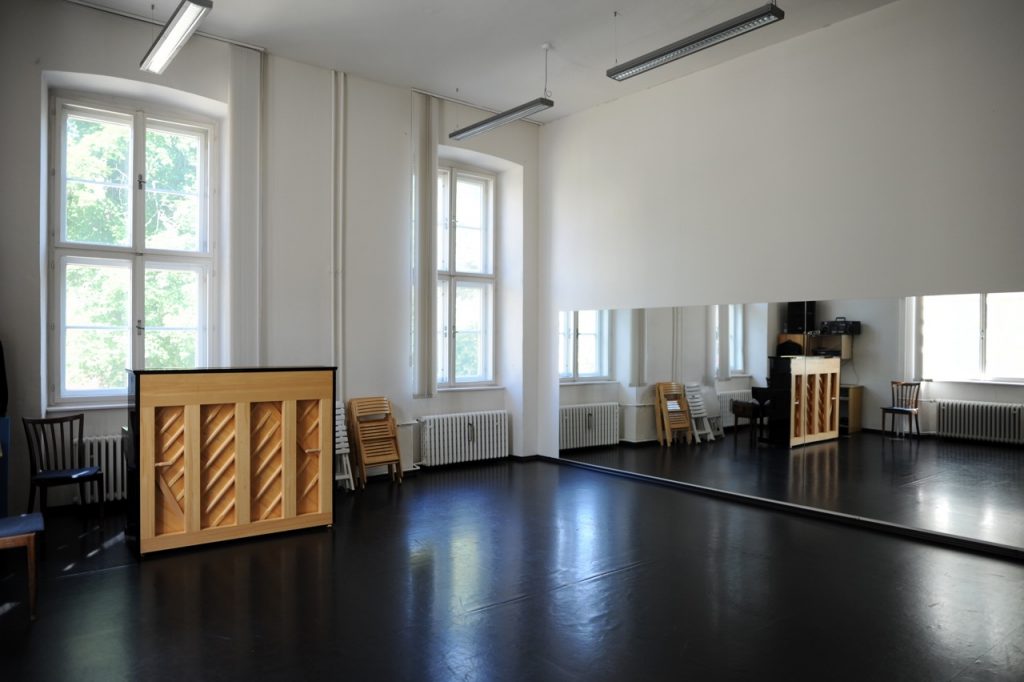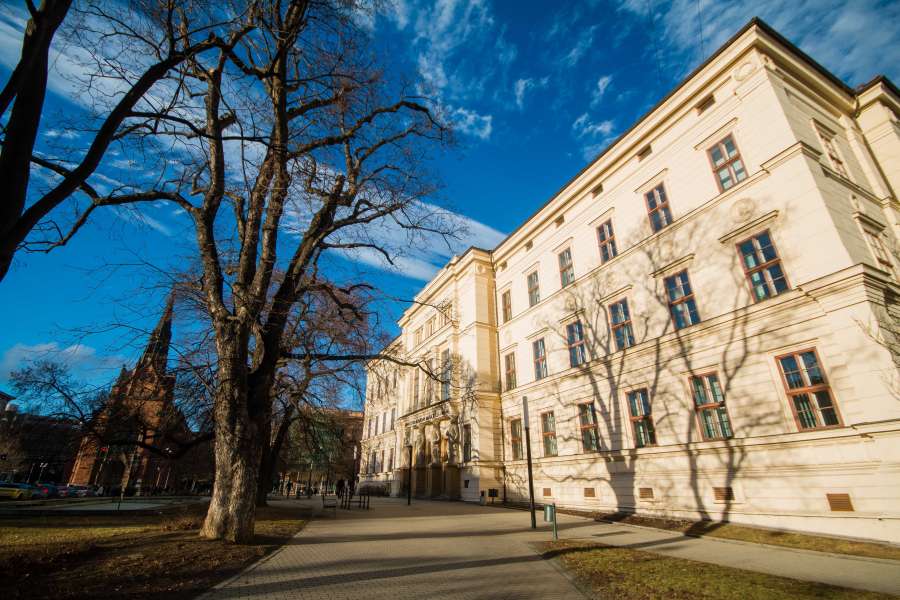JAMU Faculty of Music building
Faculty of Music
The building that houses the JAMU Faculty of Music is an important architectural monument of Brno and forms a permanent part of the city’s architectural history. It was built for a German grammar school in the years 1860–1862 based on a winning competition project of the Viennese architects Eduard van der Nüll (1812–1868) and August Sicard von Sicardsburg (1813–1868).
The authors were the leading representatives of the style that formed the Viennese Ringstrasse and the empire under Franz Joseph I. In Vienna itself, they created, for example, the command building of the Arsenal and especially the Court Opera, which is known as the Vienna State Opera today. They met as students of the Imperial-Royal Polytechnic Institute and then of the Academy of Fine Arts; together, they studied in Italy, France, England and Germany, and were appointed professors at the Academy shortly after their return. In their mutual cooperation, Nüll’s inclination to decorativeness was balanced by Sicard’s constructive and even structural nature. However, the did not live to see the grand opening of the Vienna Opera. The sensitive Nüll could not bear the strain and criticism and decided to end his life. He was soon followed by his faithful companion.
Nüll and Siccard found the stylistic inspiration for the grammar school building, once called the “seedbed of science”, in Greek antiquity. The four monumental caryatids on the portico, an allegory of classical education, are a paraphrase of the Erechtheion on the Acropolis of Athens and they were created by the sculptor Josef Břenek. The medallions with relief busts of important scientific personalities were created in the workshop of Adolf Loos Sr., the famous architect’s father. The layout of the building was as remarkable as its exterior. Today, the large vestibule with a three-branch staircase, which today houses a bust of Leoš Janáček created in 1924 by a prominent sculptor and the founder of Czech modern sculpture Jan Štursa (1880–1925), showcased the representative tendency, which is however accompanied in other areas by a sense of efficiency and clarity.

The grammar school was established at the time of the demolition of the city walls, just as the construction of public buildings, residential houses and promenade parks was being prepared on the vacated plots. The plan preparation was entrusted in 1860 to the Viennese architect Ludwig von Förster (1797 – 1863), who designed the famous Ring Road in Vienna shortly before that. On the one hand, he used older plans in the spirit of late classicist urbanism, and on the other hand, his design underwent certain modifications as a result of official comments and public criticism, so it was not approved by the city council until 1863.

The grammar school co-formed the north-western part of the ring road, which had a representative, almost government-like character thanks to the large number of sacral, school, office and cultural buildings. The historic building has been used by JAMU in part since 1949, and in full since 1965. In the mid-1990s, the building underwent extensive reconstruction and it has served exclusively the needs of the Faculty of Music since 1998.
History of Janáček Academy of Performing Arts
(using materials of prof. PhDr. Jan Sedlák, Csc.)
